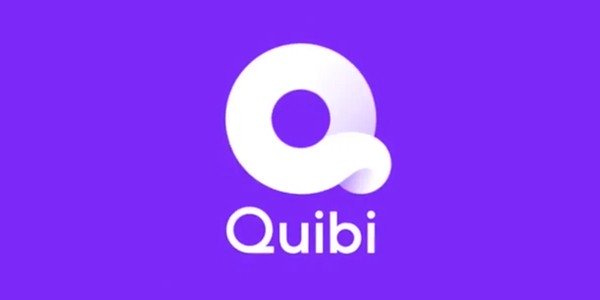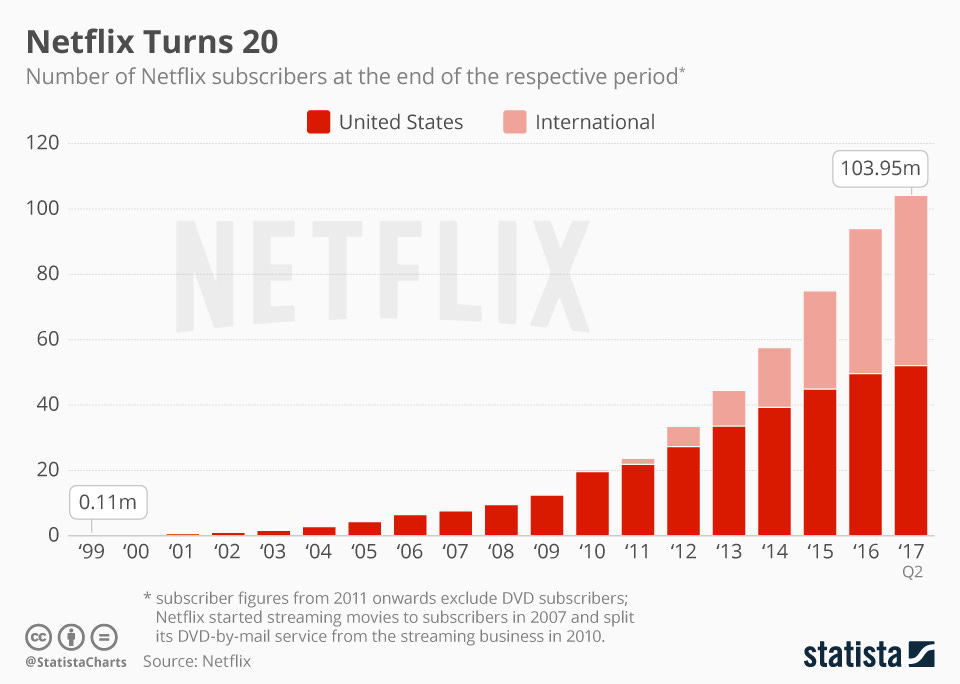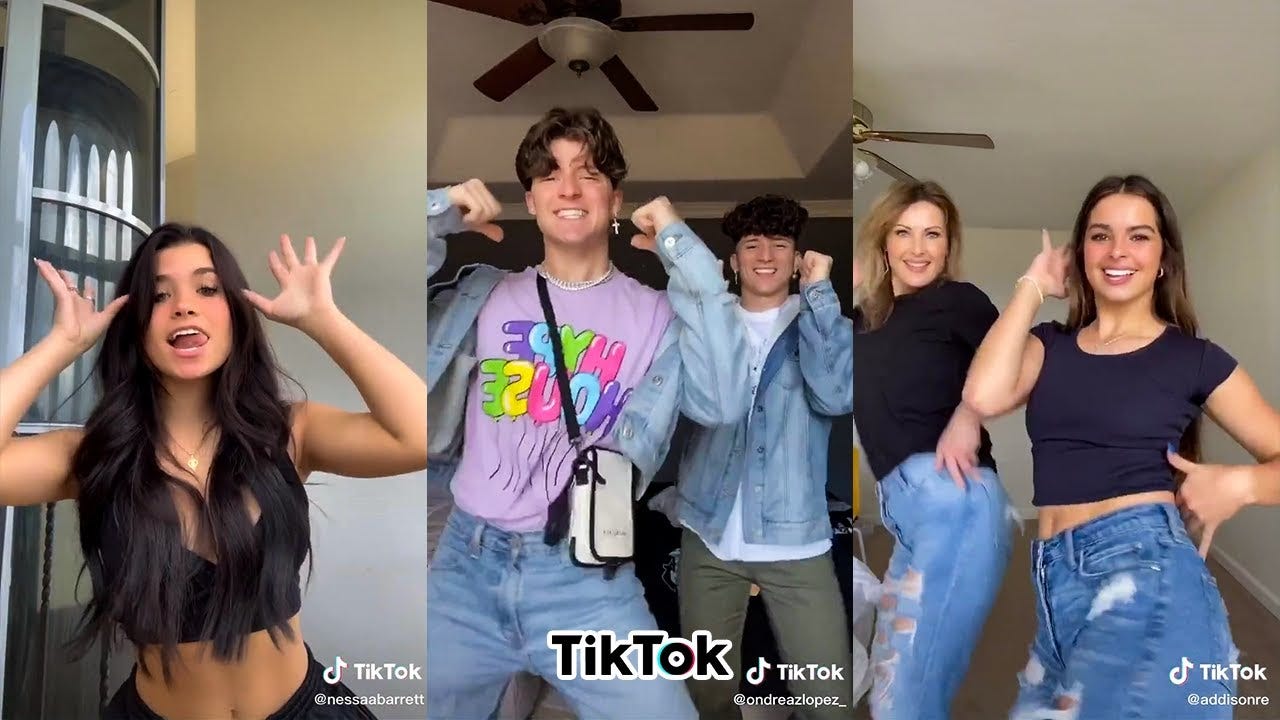
The new streaming video platform, Quibi, debuted yesterday. It's an interesting gamble and a perfect triangulation between three really important trends in today's media landscape. There is real demand for high quality, high production value scripted and reality television; there's real demand for bite sized, easily consumable video content; and there's real demand for a variety of shows and programs to be enjoyed on the go.
But with its top-down, media-genius driven founding and development, I'm skeptical as to whether Quibi is actually the perfect video platform for 2020, or whether it's a solution in search of a problem.
Is Quibi something people really want?
We Love Shows on the Internet
Increasingly, the internet, and not cable or network television, is how people watch shows. While there has been online streaming video since the 1990s [1], major platform streaming as we know it today started with Netflix's January 2007 introduction of online video streaming. This was just before 50% of Americans even gained access to broadband internet [2]. Netflix was repurposing content created elsewhere for online consumption. But that enabled the creation of online-first content (starting with House of Cards) similar to what could only be found on premium cable (HBO, Showtime) before then. Since the introduction of streaming, Netflix has grown exponentially in both usage (Netflix accounts for over 1/3 or all internet usage as of 2016 [3]), and subscribers, reaching over 167 million paying customers worldwide by the end of 2019 [4].

from Statista
Netflix is the most important player in the streaming space, but it was not a solo pioneer, and by no means is it the only power to reckon with. Hulu, as a joint venture between News Corp., NBC, and Disney, got in the game in 2007, introduced Hulu plus in 2010, and produced its first original content with the pop-culture news show, The Morning After in 2011. Amazon actually launched a streaming platform (Amazon Unbox) as early as 2006, before making it a part of Prime in 2011, and then debuting original content with the critically acclaimed Transparent in 2012. Already powerful original content producer HBO, acting wisely before losing too many viewers to cord-cutting, launched its standalone online platform, HBO Go in 2010.
Not to be outdone by those mentioned in the paragraph above, Apple, Disney, and CBS all launched new streaming platforms, replete with massive catalogs and new original content within the last year.
There is serious demand for online streaming of great content, and the pie is still growing.
We Love Bite Sized Content
The consumption of short-form video on the web has been on the rise for the last several years, evolving from a niche category into one of the main ways consumers access video content.
YouTube has been on an unstoppable upward trajectory since its launch in 2005 and subsequent acquisition by Google in 2006. It now boasts over a billion hours of content viewed by users every single day [5]. Replete with videos shorter than feature length films or hour long dramas (it has plenty of that stuff too) YouTube counters the Netflix model in a number of ways. Though it does have a subscription product, YouTube Premium, its main offering is the free, ad-supported experience we all know so well. With a combination of imported video from other sources, high production content made just for YouTube (including some made by YouTube), and tons of amazing user-generated content, YouTube is an extremely dynamic platform that seems to have a little bit (or a whole lot) of something for everyone with any variety of amount of time to fill.
And we love our videos in even shorter formats too.
In June of 2012 a small group of entrepreneurs created a social video sharing application called Vine composed of six-second clips created by users. The short format was a logical companion to Twitter's truncated text product and was acquired by the company after just four months of existence for $30 million. That six-second format turned out to be a perfect creative constraint and incited an explosion of content over the next couple of years. Twitter never released official numbers, but Vine usership likely topped 200 million by the end of 2015. Then Vine stopped growing and announced its own demise in an October 2016 Medium post [6]. A combination of reasons - internal strife, competition, a failure to innovate - led to the rapid deterioration of the platform. A former exec cited Instagram's addition of 15-second video clips as the "the beginning of the end" and that Vine "didn't move fast enough to differentiate," [7].
Whatever the reason for its demise, Vine showed us that small could be beautiful.
And the trend set in motion by Vine has seen its full realization in the newest hot mobile social video platform, TikTok. TikTok has a somewhat complex history emerging from the Chinese/American music and lip-syncing app Music.ly, which was then copied by the Chinese mega media platform, ByteDance, as Douyin (aka TikTok), which then bought Music.ly for about $1 billion in 2017, and eventually migrated its content to TikTok in 2018. TikTok allows users to easily create 15 second video clips (they can stitched together for a video of up to 60-seconds), then cut them up and edit them, share them on other platforms, and copy them at will. TikTok is easy to use because of its sophisticated (and secret) algorithm which does an eerily good job of feeding you enjoyable content right away, and keep you coming back for more. It's become a massive social force inspiring thousands of creative dance challenges, showcasing funny pranks, and enabling the rise of its own cultural stars like LilNasX, who shrewdly hitched his Old Town Road star to TikTok and rode it to mega-fame. By the end of 2018 TikTok surpassed Facebook, Instagram, YouTube, and Snapchat in monthly installs in the iOs App Store [8]. It's growth has continued unabated since then.
TikTok proved that small is beautiful.

We Love Media on the Go
Of course, all of the platforms I've mentioned above have significant (if not dominant) presences in a mobile format. Smart phones are ubiquitous, and in the United States the average person spends three and a half hours on their phone per day [9]. Americans now prefer to consume important things like news on their phones rather than on their laptops or desktops by a factor of nearly 2 [10]. You are not a media company today if you aren't mobile.
Though the idea of well produced non-music audio content they are nothing new podcasts are having a big moment. Major production companies like Gimlet (already acquired by Spotify in a combined $400m deal [11]) and Wondery sprung up just to pump out high quality, professionally produced audio programs. And preexisting media outlets like NPR, and The New York Times are devoting more and more cash to their podcast efforts.
The majority of podcasts are consumed on the go, whether they are previously downloaded and saved as they were originally intended, or streamed via apps like Spotify or Apple's dedicated Podcasts app. People consume them during their commutes, while exercising, during the walk to lunch, or while concurrently engaged in other activities that require some level of focus, but leave some degree of attention free to give to something else. Driving, cooking, sorting files.
Podcasts have found success in many shapes and sizes, ranging from the extremely long and dense Dan Carlin's Hardcore History (4 hours+), to the the short, no nonsense, daily news update of NPR's Up First (about 10 minutes of editorial content). And there is a lot of room for further creativity in substance, formatting, and programming.
Podcasts are the perfect mobile media format, and still have a lot of room to grow.
Enter Quibi
In October of 2018, billionaire media mogul Jeffrey Katzenberg, and veteran tech executive Meg Whitman announced plans for a new subscription mobile video startup at Vanity Fair’s annual New Establishment Summit. The company was to be called "Quibi," short for “quick bites of content." Quibi videos would all be less than 10-minutes long and designed to be viewed only on mobile devices.
Whitman, charged with leading the new company, is probably the most important female tech CEO in history. She took eBay public in the heady days of the late nineties tech bubble, went on to helm Hewlett Packard. She currently sits on the boards of P&G and Dropbox, and even ran for Governor of California in 2010.
Katzenberg, the idea guy, is a legitimate Hollywood legend. He cut his teeth at Paramount Pictures in the 1970s and early 80s working under both Barry Diller (if you don't know him, maybe you know his wife, DVF) and Michael Eisner. When Eisner became CEO of Disney in 1984 he charged Katzenberg with revitalizing the studio's floundering feature animation division. He succeeded. Under his tenure Disney released movies like The Little Mermaid, Beauty and the Beast, Aladdin, and The Lion King. He also signed the deal to partner Disney with Pixar. After Disney, Katzenberg teamed up with Stephen Spielberg and David Geffen to found Dreamworks SKG.
With some pretty snazzy tech, an impressive roster of creative talent, and a funny name for their company, Katzenberg and Whitman managed to raise $1.75 billion in less than two years and in only two rounds of fundraising [12].
On paper, Quibi seems to be a nearly perfect company with a perfect product. Great talent, great creative names, robust financing. It's a perfect triangulation of the developing media trends as I've articulated earlier in this essay. The content is going to be really good, designed to be consumed in bite sized chunks, on the go.
But we already have an overabundance of access to incredibly high quality content, that can be consumed in bit sized chunks, while on the go.
Great and lasting businesses haven't classically parachuted down from the clouds, fully formed and ready to dominate, the way that Quibi has. Great businesses, especially in the modern era, launch quickly, stay nimble as long as possible, iterate and change in light of reviews and user experiences, and grow quickly when product-market fit is achieved.
There is no sure-fire way to make a business, or any particular process that can be taken to build something of value. But the goal should be the same no matter what, to create something of value.
The motto of the ultra successful venture/seed funder Y-Combinator is:
Make something people want.
Quibi's giving us 90 days to try it out for free, so I’ll try it. And I'm sure I'll enjoy the content (Chance the Rapper, Chrissy Teigen, Sansa Stark, c’mon!). But I’ll probably enjoy it the same way I enjoy the great content available on Netflix, Apple, YouTube, HBO, Spotify, Prime Video, Hulu, and TikTok.
Is the addition of Quibi something people really want? I'm skeptical.
NOTES
Streaming Media Blog: The Early History Of The Streaming Media Industry and The Battle Between Microsoft & Real 2) Pew Research: Home Broadband Adoption 2007; 3) Time: Netflix Accounts for More Than a Third of All Internet Traffic; 4) Netflix: The Annual Report on Form 10-K; 5) Business of Apps: YouTube Revenue and Usage Statistics (2020); 6) Vine: Important News about Vine; 7) The Verge: Why Vine died; 8) Vox: TikTok, Explained; 9) Recode: Tech companies tried to help us spend less time on our phones. It didn’t work. 10) Pew Research Center: Americans favor mobile devices over desktops and laptops for getting news; 11) Spotify: Spotify Announces Strategic Acquisitions to Accelerate Growth in Podcasting; 12) Wall Street Journal: Streamer Quibi Raises Additional Funds Ahead of Launch



